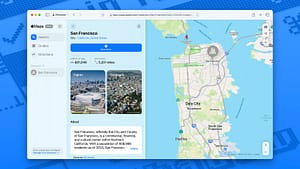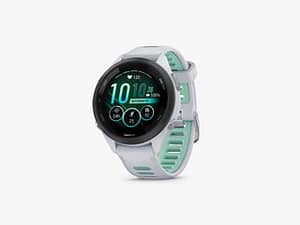MacBook Pro vs. MacBook Air: How to decide which Apple laptop you should buy

Which should you buy: a MacBook Air or a MacBook Pro? It's a surprisingly tough question since you can't go wrong either way. Apple refreshes its lineup yearly, equipping its devices with better hardware and new software features, and there have never been more factors to consider when buying a new Apple laptop. So, where do you start?
You'll need to first consider a MacBook's computing power, storage capacity, display, and size. In terms of hardware, the MacBook Pro is the "better" computer. It's more powerful, has a bigger screen, and more storage, among other things.
Also: How to watch Apple WWDC 2025 keynote : What to expect with iOS 26, Siri, AI
Previously, there was a bigger divide between the hardware in a MacBook Pro and a MacBook Air, but with the release of the M4 MacBook Air, that decision is a little trickier. The refreshed Air has Apple's M4 chipset, giving the series a significant power boost. It also comes with more memory, making it look a little more like the Pro.
Putting all the size options together, there are currently 10 MacBook Pro configurations and six MacBook Air configurations. Let's review the main differences between the two to help you decide which one to purchase.
What's the difference between the MacBook Pro and MacBook Air?
The MacBook Pro comes in two sizes: 14 inches and 16 inches. The 14-inch MacBook Pro can come equipped with one of three M4 configurations: the base M4, the M4 Pro, and the M4 Max. Be aware that the 16-inch option, however, only supports the latter two. All three chips are high-performing, although there are notable differences. The M4 Max is the beefiest, with a powerful media engine capable of powering the most demanding tasks.
Review: Apple M4 MacBook Pro
Each chip has a different number of performance cores. The standard M4 has a 10-core CPU and a 10-core GPU. Apple's M4 Pro houses a 14-core CPU and a 20-core GPU. The M4 Max has the same processor as the M4 Pro but sports a 32-core GPU instead. Apple's M4 MacBook Pro models also have different amounts of unified memory, ranging from 16GB to 48GB.
This translates to strong performance when it comes to demanding tasks like video editing. For example, Apple says the standard M4 MacBook Pro delivers up to 1.8x faster image processing when compared to the M1 MacBook Pro, and the M4 Max goes even further with 3.5x faster performance for heavy creative workloads.
Other benefits of the M4 MacBook Pro series include longer battery lives, extra ports (three Thunderbolt 5 ports and an SDXC card slot), and a higher-resolution Liquid Retina XDR display.
Here's the 14-inch MacBook Pro.
Kerry Wan/ZDNETAlternate versions of the MacBook Pro used to be available, including a 13-inch model and laptops running the M3 Pro and M3 Max chipsets. Apple has officially discontinued these variants, although refurbished units can still be found at third-party retailers. Best Buy, for instance, is selling a refurbished M3 Max MacBook Pro for $2,160.
Also: Apple's secret sauce is exactly what AI is missing
The M4 MacBook Pro is a solid laptop for most use cases, but if the base chip isn't powerful enough for you, choose either the M4 Pro or M4 Max. Remember that going big with the 16-inch Pro raises the price tag by an equally big amount. The 14-inch Pro starts at $1,599 and, with chip and internal storage upgrades, can go as high as $3,199. The 16-inch Pro starts at $2,499 and, with internal upgrades, can go up to $3,999.
As for the MacBook Air, there are two 13-inch and 15-inch M4 models available on Apple's website. The older M3 units are no longer officially on sale, but you can still find the M3 MacBook Air at Amazon. The newest generation uses the powerful M4 chipset, and although it's not able to reach the same heights of power as the MacBook Pro, it's still no slouch.
ZDNET Editor Kyle Kucharski spent some quality time testing the M4 MacBook Air and praised the laptop's responsive performance. Across multiple benchmark tests, the MacBook Air performed quite well, even coming close to the MacBook Pro M4, and in some instances, outdoing the MacBook Pro M3.
Also: I'm a Windows user, but the MacBook Air M4 has me reconsidering my daily driver
Battery life is excellent, too, lasting over 14 hours on a single charge. Its Liquid Retina display delivers a crisp image, well-defined text, smooth, vibrant video, and support for 1 billion colors. Other notable features include the ability to support two external monitors while the lid is open and Center Stage, which keeps you in the center of the MacBook's webcam.
The MacBook Air model has significantly fewer ports than the MacBook Pro, consisting of only two Thunderbolt 4 inputs, a headphone jack, and a MagSafe 3 charging port. Because there isn't as much hardware, the laptop only weighs 2.7 pounds. Conversely, the Pro laptop clocks in at 3.4 pounds and becomes heavier when housing a more powerful chipset.
Review: Apple M4 MacBook Air
Multiple MacBook Air configurations are available. At $999, the cheapest model has a 10-core CPU, an 8-core GPU, 16GB of unified memory, and 256GB SSD storage. The high-end laptop, at $1,399, sports the same processor but instead has a 10-core GPU, 24GB of unified memory, and a 512GB SSD.
You can upgrade certain aspects, like increasing the storage space to 1 TB. However, doing so will increase the price by $400, so be mindful of your shopping budget. If you want to save money, the base M3 MacBook Air is available on Amazon for $845.
Which MacBook is right for you?
The answer mainly depends on how you see yourself using the laptops and how the display size and weight factor into that equation. A reliable computer is an investment; you don't want to spend too much on an overqualified laptop, and you don't want to buy a computer that's not powerful enough for your needs. Since the gulf between the two models isn't as big as in previous generations, the one you should buy depends on the type of user you are.
If you're a graphic designer, music producer, professional photographer, videographer, 3D artist, or iOS game and app developer, a MacBook Pro would be the way to go. The Pro models can handle intense graphics processing and more software running in the background without significantly lagging, overheating, or slowing down.
Also: How to make any MacOS app start at login - to save you time and clicks
If you are a student or someone who spends most of your time in Microsoft Office or Google Workspace, a MacBook Air may be a better fit, as it won't put a burden on your back as you lug it around. If you want a MacBook to casually surf the internet, watch YouTube or Netflix, respond to emails, and FaceTime your friends, then the Air is perfect for you.
No matter which model you buy, a MacBook is an excellent device if you want to expand your personal Apple ecosystem with a device that works seamlessly with your iPhone, AirPods, Apple Watch, and other products. Handoff, for example, allows you to switch FaceTime calls between your MacBook and iPhone, and your MacBook can easily access your iPhone files, messages, contacts, and photos.
What are the tariffs in the US?
The recent US tariffs on imports from countries like China, Vietnam, and India aim to boost domestic manufacturing but are likely to drive up prices on consumer electronics. Products like smartphones, laptops, and TVs may become more expensive as companies rethink global supply chains and weigh the cost of shifting production.
Laptops and PCs are also hit hard by the new US tariffs, with import duties potentially increasing prices by up to 35%. Many major brands still rely on Chinese and Vietnamese factories for assembly, meaning consumers could soon pay significantly more for everything from budget Chromebooks to high-end gaming rigs.
These tariffs may accelerate efforts to move production to regions like Mexico or India, but shoppers can expect higher costs and fewer discounts in the short term.
Show more







Post Comment